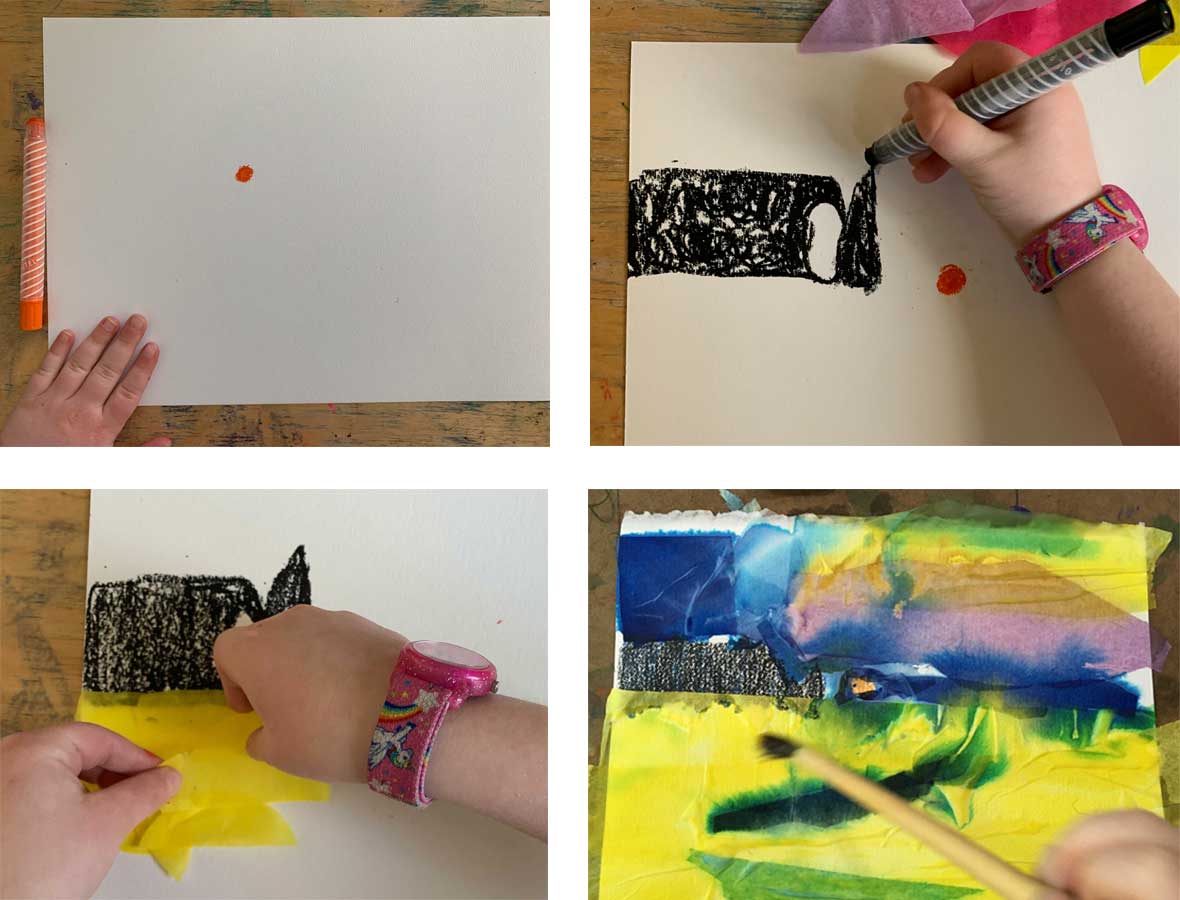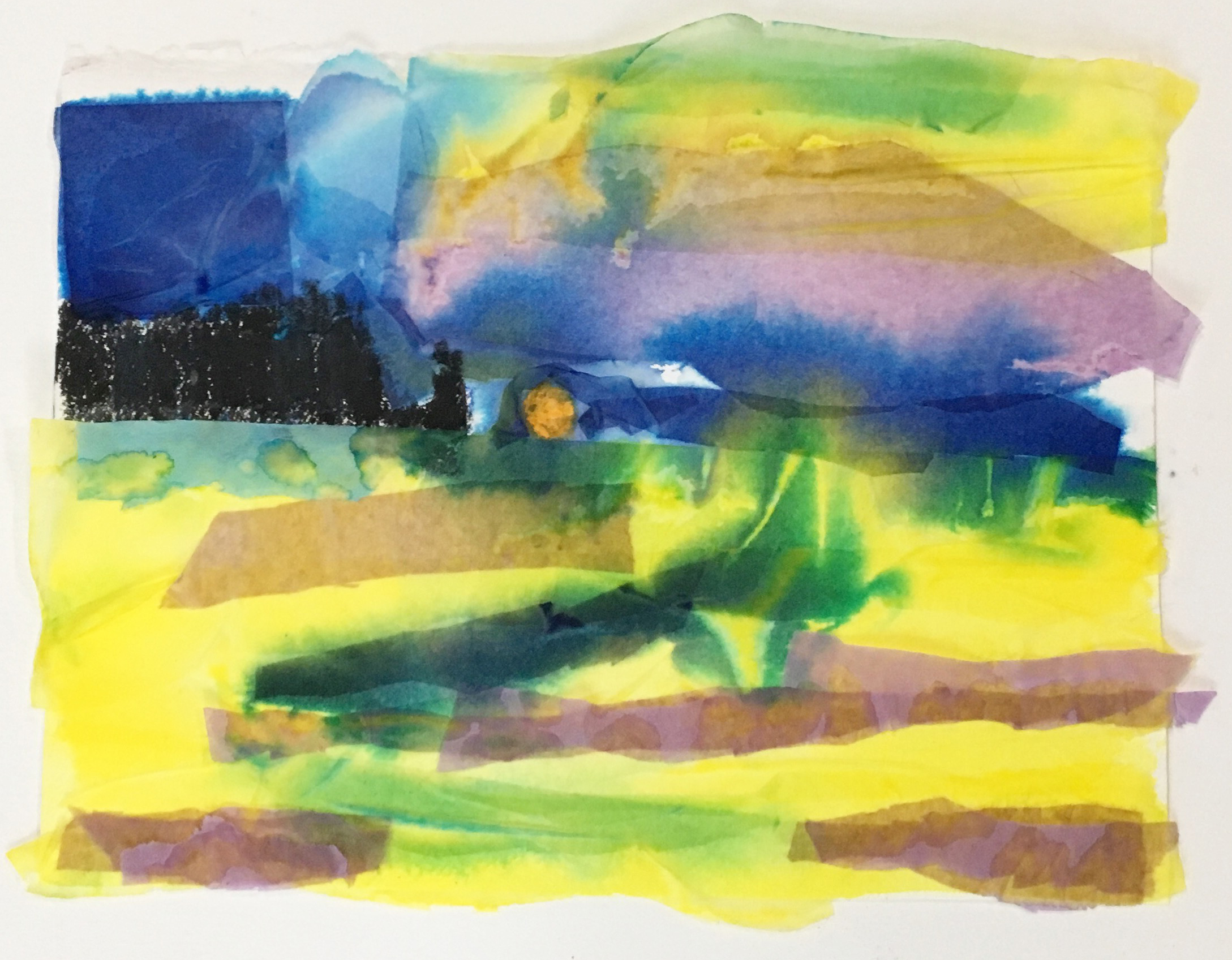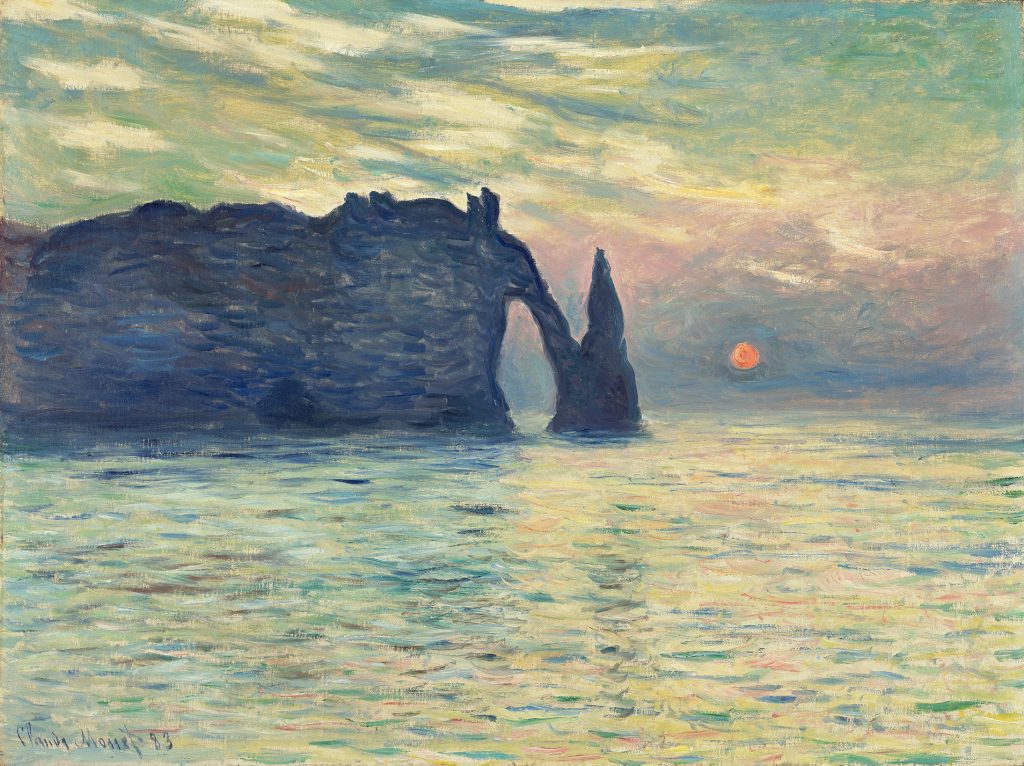Mira:
Introduce Monet’s The Cliff, Étretat, Sunset to students with the following information and then pose the questions to them.
- In this painting, Claude Monet shows us a sunset over a beach in the French town of Étretat. Monet painted outside to capture the sunlight—and the place—in the moment.
- He would often paint the same subject, like these cliffs, throughout the day to show how the light changes over time.
- What colors do you see in this sunset? What colors did Monet paint in the water? What colors are both in the sky and the water?
- Where have you seen a sunset? What did it look like?
Muévete:
Invite students to imagine that they can physically step into Monet’s The Cliff, Étretat, Sunset and use their senses to explore the landscape within the painting. Some suggestions for guiding this exploration are below.
Say to the students:
- Take a giant step onto the beach, where the sand meets the water. Feel the sand, rough with pebbles and shells.
- I spy a boat. Let’s get into the boat, so we can travel on the water. (Sit down on knees).
- Use your oar to paddle. (Move an imaginary oar with your arms.) The water is a little choppy as we row. (Rock back and forth with your body.) Let’s rest and look at this peaceful sunset. What do you see?
- I see the reflection of the sun—golden yellow, soft lavender, pale green, and deep blue.
- As I look up, I see a large cliff. If you were to touch this tall rock, what do you think it would feel like?
- The orange sun is about to disappear into the water. It’s time to row our boat back to the beach. (Make rowing motions.) What do you hear as we row back to shore?
- Exit your boat onto the sand—and then take a large step out of the painting. What did you notice while you were visiting Monet’s sunset?
Marca:
Ask students to create their own sunset collage inspired by Monet’s painting. Share that collage (from the French verb coller which means “to glue”) is a technique and term for artwork in which you glue materials to a surface.
Provide an orange and black crayon for each student.

- Start by drawing the sun.
- What shape is the sun? Where is Monet’s sun on the page? Use your orange crayon to draw your sun on your page.
- Use a black crayon to draw the curvy outline of the cliffs on your page. Color the cliffs in with your black crayon.
- Paint your page with water until it glistens but is not soaked. Layer the tissue paper strips onto your page. Look to the painting to inspire your color choices for the water and sky. What colors do you see next to each other? What happens when colors bleed together?
Try to watch the sunset tonight at home. Think about what colors you see that are also in Monet’s painting, and which colors are different. (Extension activity below.)

Actividades de extensión:
- Set up (or create) a light table with colorful transparency sheets, transparent rainbow blocks, magnatiles, etc. Encourage the kids to explore how the colors change as they play with materials on the light table.
- If you do not have bleeding tissue paper, you can create the colorful landscape by adhering regular tissue paper to the page with an equal part glue and water solution. Brush the solution over the tissue paper after placing.
Written by Emily Perreault, PreK Programs Educator
